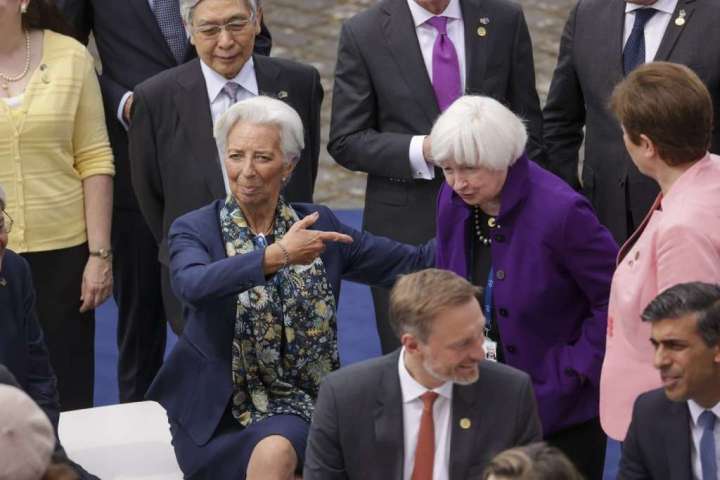We inflation hawks have had a difficult few decades. At times, we have felt like members of a religious cult that forecasts the date and time the world will end. Membership dwindles and faith is shaken as the world goes stubbornly on.
Janet Yellen’s blunt talk on inflation is downright heroic

We hawks are almost all of a certain vintage: born in the 1950s or early 1960s and coming of age in the 1970s. Our formative experience of economics was grim. Business news was not the carnival of booyah billionaires that we’ve come to know. The stock market was, despite gyrations, flat as a pancake and about as sexy as toenail fungus: The Dow Jones industrial average stood at 839 at the end of 1970 and at the end of 1979 it was … 839.
Meanwhile, people got raises but never got ahead. Mom’s frequent trips to the supermarket to feed her large and hungry family were marked by escalating desperation as prices rose like sparks from a fire. We stopped filling the gas tank on the family car; the price was prohibitive. Instead, we crept to the next paycheck on drips and fumes, adding a gallon here, two gallons there — just enough to get to the next few destinations.
Follow David Von Drehle‘s opinions
FollowMind you, we were a solidly middle-class family, living in a house with four bedrooms and 2½ baths with a mortgage payment of a couple hundred bucks. But this is what persistent high inflation mixed with a dull economy does. It makes people poorer. Do not listen to economists who focus on higher wages to paint high inflation as benign. Prices always rise faster.
I take no joy in being correct at last: Inflation is here. That’s news to no one who pays for groceries or pumps gas. Still, the fact is urgently important. In recent months, inflation has been running above 8 percent year over year, the highest level since the bad old days. Twenty years of stimulative federal spending has finally caught up to the U.S. economy. And while the resulting stock market drop is scuffing the fortunes of wealthy Americans, as always with inflation, the real pain is being felt at the lower end of the prosperity spectrum.
According to the credit monitor Equifax, loan delinquencies as of March among subprime borrowers — working people trying to get ahead — had risen for eight consecutive months. That’s more and more people who can’t swing their car or credit card payments. With prices climbing on everything from gasoline to new homes, this debt trap is sure to get worse before it gets better.
In this context, a highly impolitic remark by Treasury Secretary Janet L. Yellen might have been heroic. Addressing the Group of Seven finance ministers of leading Western economies at their meeting in Germany on May 18, Yellen wielded the dreaded s-word of 1970s misery: stagflation. The last remaining bulls on Wall Street curled into the fetal position, their animal spirits shattered by the mere sound of the word.
Normally, a treasury secretary is not supposed to crash markets by saying the quiet part out loud. But in this case, Yellen’s candor might speed the healing. The sooner we all wake up to the perils of our highly disrupted economy, the better. There is a proven medicine for the disease of high inflation; delay in taking it only makes things worse.
Prices escalate when demand outstrips supply. Unfortunately, the fact of rising prices accelerates the problem, because people and companies start to think: I’d better buy now because everything will cost more next week. This pushes demand higher, speeding the ugly cycle.
From Weimar Germany to modern-day Venezuela, governments have tried to solve runaway prices by giving people more money. But that only increases demand, which further pushes up prices, until people are carrying money in wheelbarrows to buy a loaf of bread. Some governments try to enforce a ceiling on rising prices, as President Richard M. Nixon did in the early 1970s, with poor results. Some try happy talk — the opposite of Yellen’s approach. President Gerald Ford famously bombed in the mid-1970s with his “Whip Inflation Now” campaign. WIN was a loser.
What works is an unpleasant regime of sharply higher interest rates, as Paul A. Volcker, then the head of the Federal Reserve, finally proved in the 1980s. This pulls money out of consumption and into savings, which restores price equilibrium. Current Fed Chair Jerome H. Powell has bravely signaled his intention to move ahead in Volcker’s large footsteps. Wise heads will thank him someday. And if Yellen’s blunt talk provides Powell with needed support, we’ll be thanking her, too.






